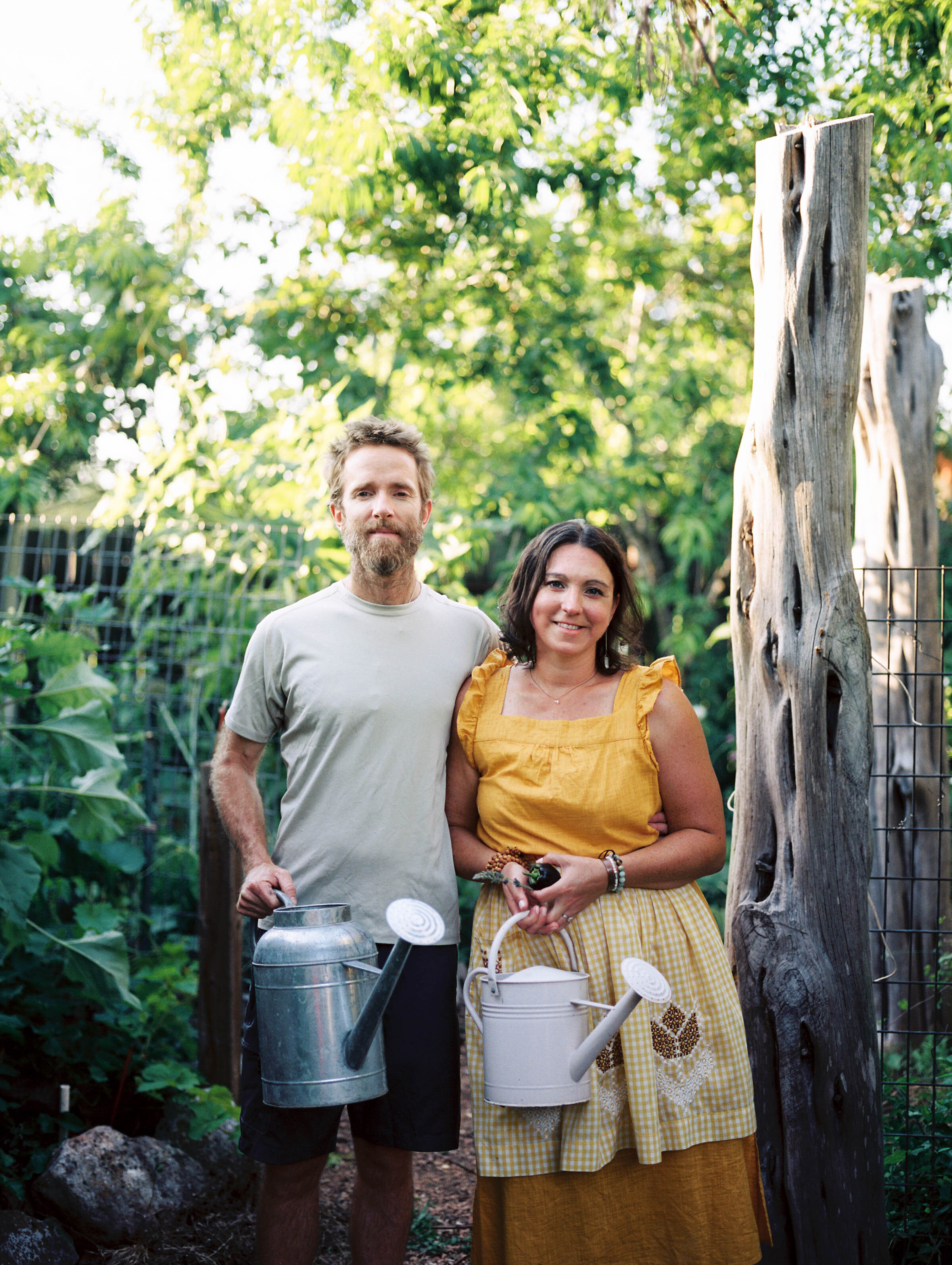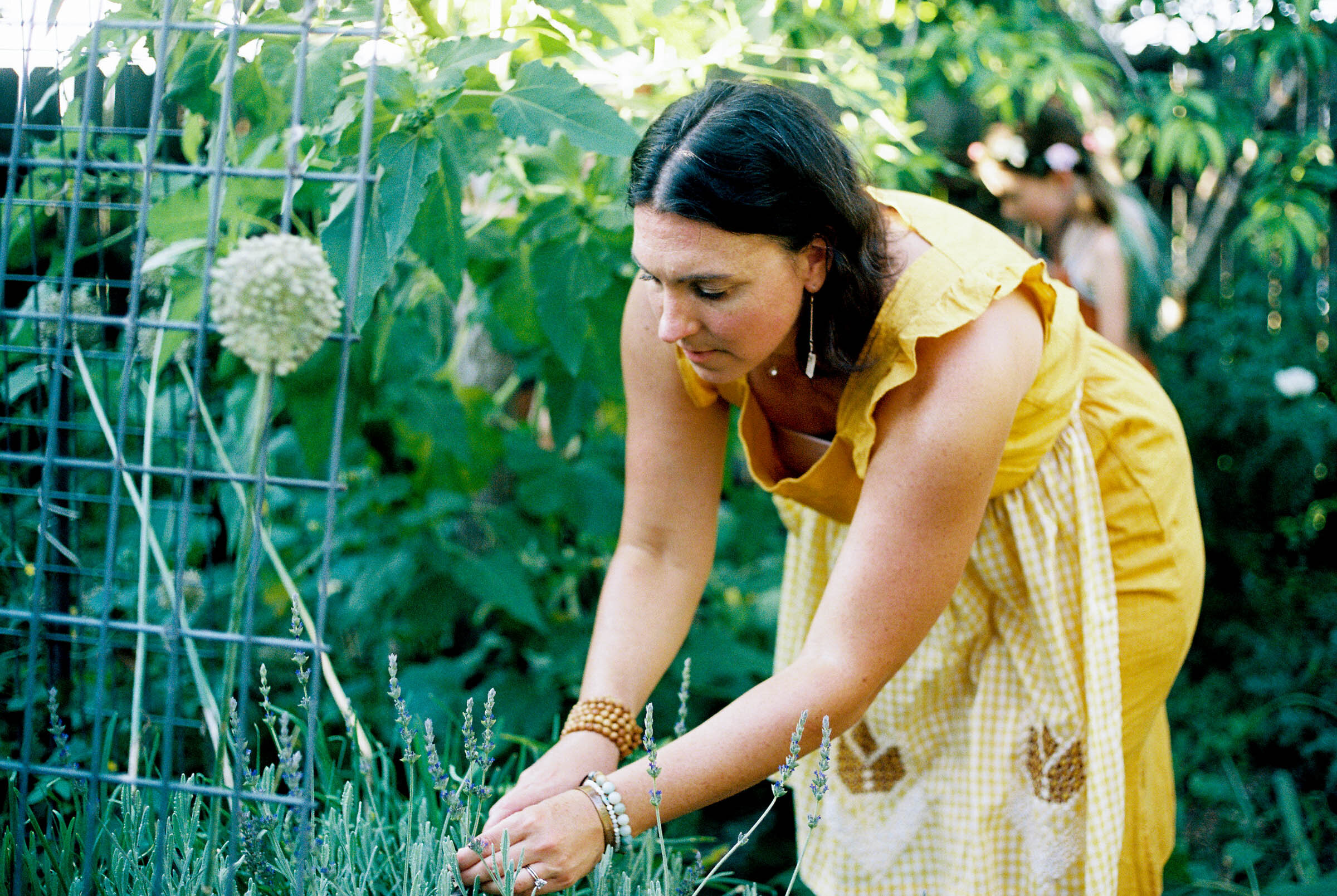Mulching...What's the Point??
by Brad & Amy Lupton
I (Brad) was listening to a radio show a few years ago, I'll leave the name out to protect the ignorant, and he said that about the same time mulch became popular was the same time tree trimming companies started to need a place to “get rid” of their shredded trees. My ears perked up. A caller basically wanted to know if they should mulch their trees, gardens, and landscape in general. The host said that the biodegrading wood invited loads of different kinds of harmful fungi. He was half right.
Mulching in my part of the world is a must.
Because our sun is so hot, the mulch can offer a barrier between the hot rays and the soil. Within that same thought it shades the soil and offers it relief from dry winds.
Fungus that is living in the soil has a relationship with the roots of different types of plants. The fungus offers vitamins, minerals, and nutrients that the plant has trouble getting by itself. The roots in exchange can offer carbohydrates that the fungus cannot make themselves. The reason I bring this up is because a great food source for fungus is wood.
Fungus is known as the teeth of the forest.
When you find a fallen giant in the forest, it is the fungus that takes it back to the soil. Mulch entices fungus to thrive, which greatly increases the benefit capability of the fungus in the soils. That in turn increases the potential of the plants. As the mulch gets taken down from wood to soil, it slowly increases the biomass in the soil (which helps with moisture retention) and eventually turns into a time release fertilizer for everything.
For lazy gardeners like myself, the multitude of benefits are too advantageous to not be taken advantage of.
Another good use for mulch is it diminishes the chance of weeds. Even if they get their heads up through the mulch, they are easy to pull. Their roots aren't dropped down in hard ground, but rather loosely woven into the mulch.
One last thing I'll say about mulch; if you will put an inch or two of high quality compost down just before you mulch, then drop 3-6 inches of mulch on top of that, you will not be disappointed.
A heavy watering or a nice hour of light rain will set it up nicely. A mistake many people make, which rounds me back to the comment from the radio host, is that people pile mulch up to the trunk of the tree. That can cause a lot of issues. To avoid these issues, simply start 6-12 inches from the base of the tree and go outward to a foot or two outside the drip line. It can be a lot of
material, but well worth the effort.
I (Amy) have done experiments with and without mulch with kitchen gardens and herb pots, gardens and seedlings.
In many repeated instances of warmer climates, the gardens with mulch applied has increased my yields of plants by threefold.
My favorite way to use mulch in my garden settings is to use what we call green mulch.
When you trim a plant, pull weeds, or chop plants, mow grass (as long as the grass is organically grown without fertilizers and weed control) you can essentially just lay the green chopped or pulled matter down under the canopy of the plant. It is best to keep it away from the base of the plant, and don't let it build up around the base. It will protect the soil, act as a slow fertilizer, and nourish he area. You can also plant herbs or ground cover under taller or more mature plants and the herbs can act as a permanent living “mulch.” You can chop the herbs back from time to time or let them die back on their own. Using a nitrogen fixing plant like clover, you give both ground cover and fertilization to the soil.
Catnip and St. Johns Wort are great green live mulches that offer balanced fertilization for the plants.
In Texas, our mulching schedule depends on the dryness and heat of the summer. But almost all gardens can benefit from hardwood or green mulches on the soil.
Happy Mulching!




